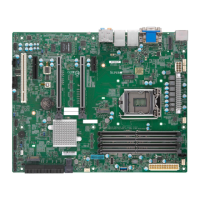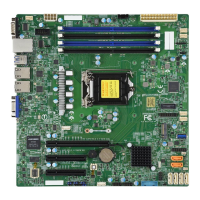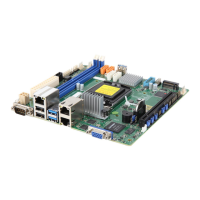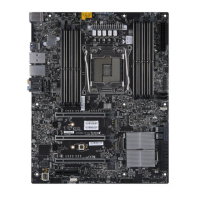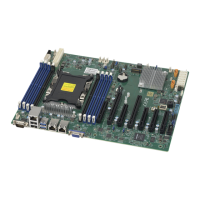Chapter 4: BIOS
59
Max Link Width
Use this feature to select the PEG link for the specied port. The options are Auto, Force
X1, Force X2, Force X4, and Force X8.
ASPM (Available if a graphics card is detected)
Use this feature to activate the Active State Power Management (ASPM) level for a PCI-
E device. Select Auto for the system BIOS to automatically set the ASPM level based
on the system conguration. Select Disabled to disable ASPM support. The options are
Disabled, Auto, ASPM L0S, ASPM L1, and ASPM L0sL1.
*If the feature above is set to ASPM L0S, the feature below will become available
for conguration:
ASPM L0S (Available if a graphics card is detected)
Use this feature to enable the PCI-E ASPM L0S. The options are Root Port Only, End-
point Port Only, and Both Root and Endpoint Ports.
De-emphasis Control (Available if a graphics card is detected)
Use this feature to congure the De-emphasis control on PEG. The options are -6 dB
and -3.5 dB.
PEG0/1/2 Slot Power Limit Value
Use this feature to set the upper limit on the power supplied by the PCIE slot. Press "+"
or "-" on your keyboard to change this value. The default setting is 75.
PEG0/1/2 Slot Power Limit Scale
Use this feature to select the scale used for the slot power limit value. The options are
1.0x, 0.1x, 0.01x, and 0.001x.
PEG0/1/2 Physical Slot Number
Use this feature to set the physical slot number attached to this port. The values are
0 - 8191.
PEG0/1/2 Max Payload Size
Use this feature to select the PEG0 maximum payload size. The options are Auto, 128
TLP, and 256 TLP.
Program PCIe ASPM After OpROM
PCIe ASPM, the Active State Power Management for PCI-Express slots, is a power
management protocol used to manage power consumption of serial link devices installed
on PCI-E slots during a prolonged off-peak time. If this feature is set to Enabled, PCI-E
ASMP will be programmed after OPROM. If set to Disabled, the PCI-E ASPM will be
programmed before OPROM. The options are Disabled and Enabled.

